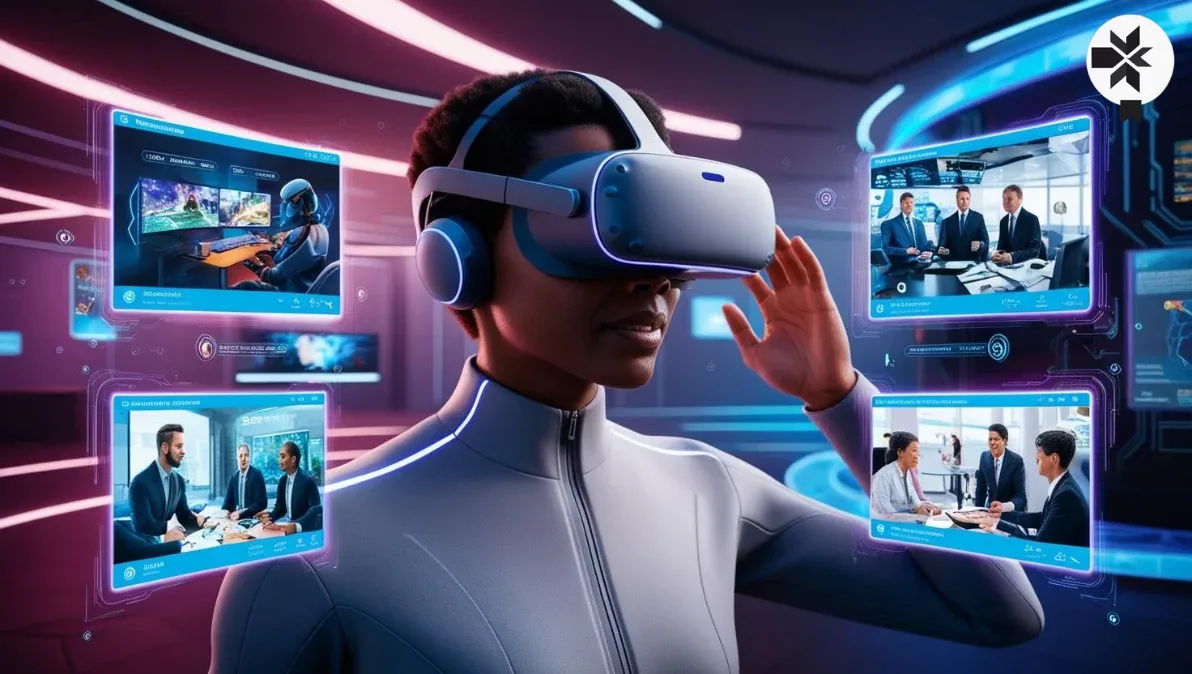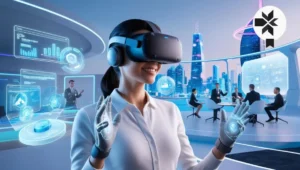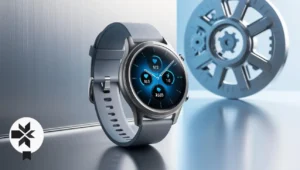Virtual reality (VR) has come a long way since its inception, and 2025 is shaping up to be a groundbreaking year for immersive technology. Whether you’re a gamer, a professional, or simply a tech enthusiast, choosing the right VR headset can feel overwhelming with so many options available. That’s where we come in. In this guide, we’ll break down the top VR headsets of 2025, helping you make an informed decision based on your needs, budget, and preferences.
Table of Contents
ToggleWhy VR Headsets Are More Important Than Ever in 2025
VR technology is no longer limited to gaming. From virtual meetings and training simulations to immersive storytelling and fitness, VR headsets are transforming how we interact with the digital world. According to a recent report by Statista, the global VR market is expected to reach $50 billion by 2025, driven by advancements in hardware, software, and user experience.
But with so many options on the market, how do you choose the best VR headset for your needs? Let’s dive into the top contenders for 2025.
Top VR Headsets of 2025
Here’s a curated list of the best VR headsets this year, based on performance, features, and user feedback:
1. Meta Quest 4
- Key Features:
- Standalone design with no need for a PC or console.
- Improved resolution (8K per eye) for ultra-sharp visuals.
- Enhanced hand-tracking and haptic feedback for immersive interactions.
- Best For: Gamers and casual users who want a wireless, all-in-one solution.
The Meta Quest 4 continues to dominate the standalone VR market, offering a seamless experience for both beginners and seasoned users. Its lightweight design and advanced features make it a top choice for 2025.
2. Apple Vision Pro 2
- Key Features:
- Cutting-edge AR/VR hybrid technology.
- High-resolution OLED displays with eye-tracking.
- Seamless integration with the Apple ecosystem.
- Best For: Professionals and creatives looking for a premium, multifunctional device.
Apple’s second-generation Vision Pro takes mixed reality to the next level. While it’s on the pricier side, its sleek design and powerful performance make it a favorite among professionals.
3. Sony PlayStation VR2 Pro
- Key Features:
- Designed exclusively for PlayStation 5.
- 4K HDR display with a 120Hz refresh rate.
- Advanced haptic feedback and adaptive triggers.
- Best For: Console gamers who want a next-gen VR experience.
If you’re a PlayStation fan, the PS VR2 Pro is a no-brainer. Its immersive gameplay and exclusive titles make it one of the best gaming-focused headsets of 2025.
How to Choose the Best VR Headset for You
With so many options, selecting the right VR headset can be tricky. Here are some factors to consider:
- Purpose: Are you gaming, working, or exploring new experiences?
- Budget: Prices range from 399 to over 3,000, so set a budget before shopping.
- Compatibility: Ensure the headset works with your existing devices (PC, console, etc.).
- Comfort: Look for adjustable straps, lightweight designs, and breathable materials.
- Content Library: Check if the headset supports the apps, games, or software you want to use.
The Future of VR: What Lies Ahead Beyond 2025
Virtual reality (VR) has already transformed industries like gaming, education, healthcare, and entertainment. But what does the future hold for this groundbreaking technology? As we look beyond 2025, the possibilities are nothing short of revolutionary. Want to learn more about future of Virtual Reality? Check out our full guide of Virtual Reality (VR) – The Future of Immersive Technology.
From brain-computer interfaces to hyper-realistic simulations, the future of VR promises to redefine how we interact with the digital and physical worlds. Let’s explore what’s on the horizon.
1. Brain-Computer Interfaces (BCIs)
Imagine controlling a VR headset with just your thoughts. This isn’t science fiction—it’s the future of VR. Companies like Neuralink and OpenBCI are already working on brain-computer interfaces that could allow users to navigate virtual environments using their minds.
- How It Works: BCIs use sensors to detect brain activity and translate it into commands for VR systems.
- Potential Applications:
- Gaming: Control characters and actions with your thoughts.
- Healthcare: Help patients with mobility issues interact with VR for therapy or communication.
- Education: Enable immersive learning experiences without physical controllers.
By 2030, BCIs could make traditional VR controllers obsolete, creating a seamless connection between the human brain and virtual worlds.
2. Full-Body Haptic Suits
While current VR systems focus on hand and head tracking, the future will bring full-body immersion. Haptic suits, like those developed by Teslasuit and bHaptics, are designed to simulate touch, temperature, and even pain in virtual environments.
- Key Features:
- Tactile feedback for every part of the body.
- Temperature control to mimic real-world sensations.
- Motion tracking for realistic movement.
- Potential Applications:
- Gaming: Feel the impact of a punch or the warmth of a virtual sun.
- Training: Provide realistic simulations for military, medical, or sports training.
- Social Interaction: Enhance virtual meetings with physical touch.
By 2025, haptic suits could become more affordable and accessible, bringing a new level of realism to VR experiences.
Challenges to Overcome
While the future of VR is exciting, there are still hurdles to address:
- Cost: High-end VR systems remain expensive, limiting accessibility for many users.
- Motion Sickness: Some users experience discomfort during prolonged VR use, which needs to be mitigated.
- Privacy and Security: As VR becomes more integrated into our lives, protecting user data will be critical.
Final Thoughts
The future of VR is bright, with innovations like brain-computer interfaces, haptic suits, and the metaverse set to revolutionize how we interact with technology. By 2030, VR could transform every aspect of our lives, from how we work and learn to how we socialize and entertain ourselves.
As we move beyond 2025, one thing is clear: virtual reality is no longer just a tool for gaming—it’s a gateway to a new dimension of human experience.
FAQS (Frequently Asked Questions)
No, VR headsets are no longer limited to gaming. They are used for various applications, including virtual meetings, training simulations, fitness, and even creative work in mixed reality environments.
Some challenges include:
Cost: High-end VR systems remain expensive, limiting accessibility.
Motion Sickness: Some users experience discomfort during prolonged VR use.
Privacy and Security: As VR becomes more integrated into daily life, protecting user data will be crucial.
Yes, haptic suits are expected to enhance VR experiences by providing full-body tactile feedback. These suits can simulate touch, temperature, and even pain, adding realism to gaming, training simulations, and virtual social interactions.
BCIs detect brain activity using sensors and translate it into commands for VR systems. This technology could eventually replace traditional controllers, enabling users to control VR experiences directly with their thoughts. Potential applications include gaming, healthcare, and education.
Yes, the future of VR looks promising with innovations like brain-computer interfaces (BCIs) that could allow users to control VR with their thoughts and full-body haptic suits that provide realistic tactile feedback. These technologies could revolutionize how we interact with virtual environments by 2030.







One thought on “Top VR Headsets of 2025: Your Ultimate Guide to Choosing the Best”
I want to show you one exclusive program called (BTC PROFIT SEARCH AND MINING PHRASES), which can make you a rich man!
This program searches for Bitcoin wallets with a balance, and tries to find a secret phrase for them to get full access to the lost wallet!
Run the program and wait, and in order to increase your chances, install the program on all computers available to you, at work, with your friends, with your relatives, you can also ask your classmates to use the program, so your chances will increase tenfold!
Remember the more computers you use, the higher your chances of getting the treasure!
DOWNLOAD FOR FREE
Telegram:
https://t.me/btc_profit_search